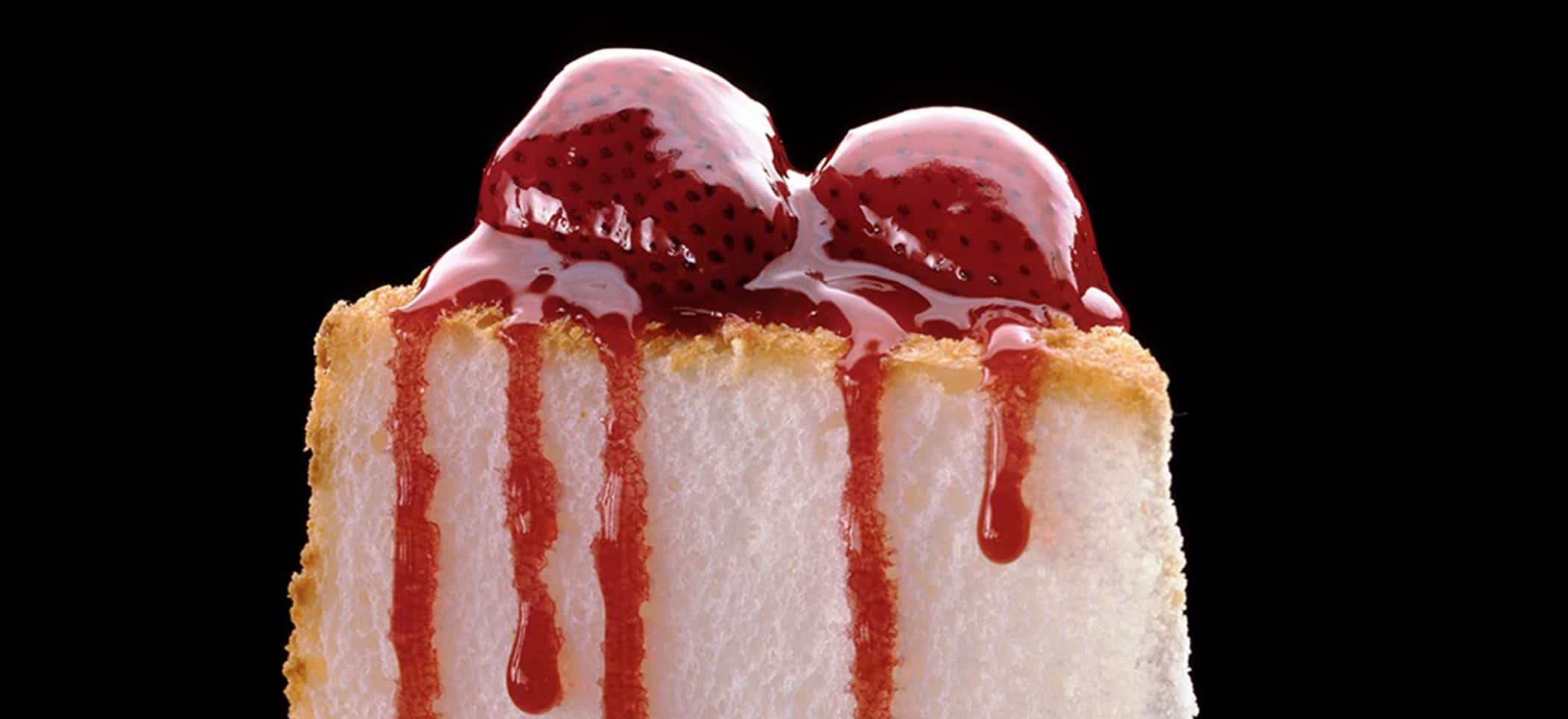

Directions
HEAT oven to 375°F. BEAT egg whites and cream of tartar in mixer bowl with whisk attachment on high speed until foamy. Beating constantly, ADD granulated sugar, 1 Tbsp. at a time, beating after each addition until sugar is dissolved before adding the next. (Rub a bit of mixture between thumb and forefinger; it should feel completely smooth.) Continue beating until whites are glossy and stand in soft peaks. BEAT IN vanilla and almond extract, if desired.
SIFT powdered sugar, flour and salt together twice. SIFT about 1/2 cup of the flour mixture over egg whites. FOLD gently just until flour disappears. Do not stir. REPEAT sifting and folding in flour mixture 1/2 cup at a time.
POUR batter into ungreased 10 x 4-inch tube pan. Gently CUT THROUGH batter with metal spatula to release any air pockets. BAKE in center of 375°F oven until top springs back when lightly tapped with finger, 30 to 40 minutes. INVERT cake in pan, with tube resting on a bottle. COOL completely, about 1-1/2 hours.
Ingredients
- 12 large EGG whites, room temperature
- 1 1/2 tsp. cream of tartar
- 3/4 cup granulated sugar
- 1 1/2 tsp. vanilla
- 1/2 tsp. almond extract, OPTIONAL
- 1 1/4 cups powdered sugar
- 1 cup sifted cake flour
Tips
Keep the yolks separate from the whites. Fat from egg yolk will prevent egg whites from beating up properly. When separating eggs, take care that no yolk gets in the whites. To avoid an accident, separate each egg white into a cup or small bowl before transferring it to the mixer bowl. Discard any white that has even a speck of yolk in it.
Egg temperature: It’s easiest to separate eggs cleanly when they are refrigerator cold. However egg whites whip up to greater volume when they’ve had a chance to warm up a bit, 20 to 30 minutes. Always begin by separating the eggs. Let the whites stand at room temperature while you prepare the baking pan, equipment and other ingredients.
Add sugar gradually. For optimum volume and smoothest texture, sugar should be added gradually, beginning only after the whites have been beaten to the foamy stage (about double in volume). Adding some or all of the sugar before beginning to beat will result in less volume.
To check if sugar is dissolved: After each addition, whites should be beaten until sugar has dissolved before adding more. To test, rub a bit of egg white between thumb and forefinger. If sugar is dissolved, it will feel completely smooth. If it feels grainy or sandy, continue beating.
Inverting the pan to cool the cake: The delicate angel cake structure is a bit unstable when still hot. It is likely to fall if cooled upright. Inverting gives the cake time to firm up as it cools.
Elevating the pan to cool the cake: This provides air circulation all around the cake, allowing it cool more quickly, without getting soggy. The traditional angel cake tube pan has little feet to elevate the cake about an inch for just this reason. Raising it higher would be even better. Slipping the tube of the pan over the neck of a bottle and letting the cake rest there to cool is one suggested method. Other suggestions include supporting the inverted pan on a large inverted funnel or on four evenly placed glasses.
To remove cake from pan: Run a thin knife between side of pan and cooled cake to loosen all around, taking care not to tear the cake. Repeat, running knife between center tube and cake. The traditional angel cake pan has a removable bottom. Lift the cake out of the pan by the tube, slide the knife between cake and pan bottom to free it and invert it onto wire rack or plate. If pan does not have a removable bottom, invert pan after sides of cake have been loosened; tap pan on countertop and gently shake cake from pan.
This recipe is an excellent source of protein.
Per serving: 1/10th Recipe
- Calories 476
- Total fat 1 g
- Saturated fat 0 g
- Polyunsaturated fat 0 g
- Monounsaturated fat 0 g
- Cholesterol 0 mg
- Sodium 312 mg
- Carbohydrates 103 g
- Fiber 1 g
- Sugar 76 g
- Protein 15 g
- Vitamin A 0 mcg
- Vitamin D 0 mcg
- Folate 4 mcg
- Choline 1 mg
- Calcium 14 mg
- Iron 2 mg
- Potassium 351 mg
To ensure food safety, eggs should be cooked until both the yolk and the white are firm. Consuming raw or undercooked eggs may increase your risk of foodborne illness, especially for those with certain medical conditions. For recipes that call for eggs that are raw or undercooked when the dish is served, use either pasteurized shell eggs that have been treated to destroy Salmonella, or use pasteurized egg products.
